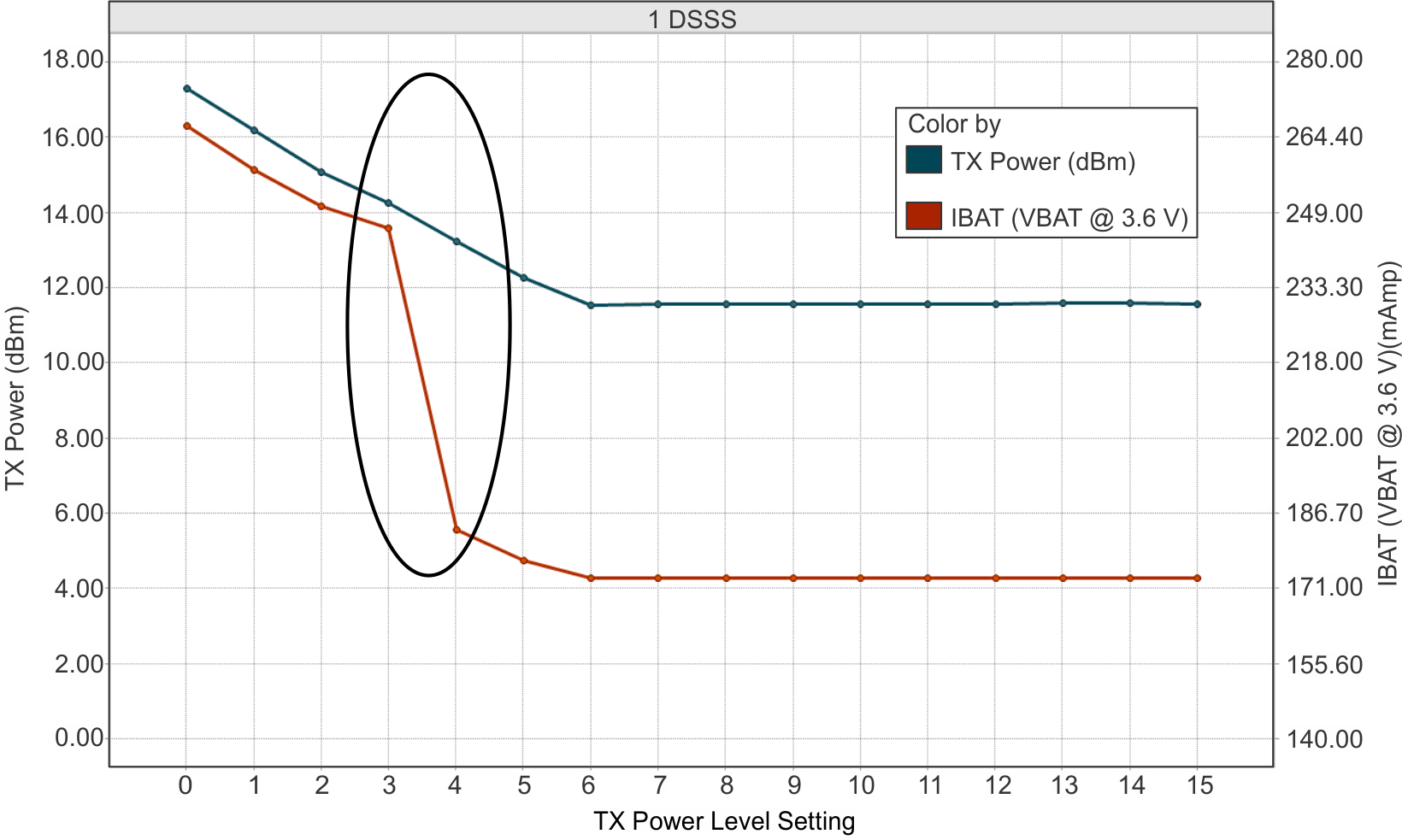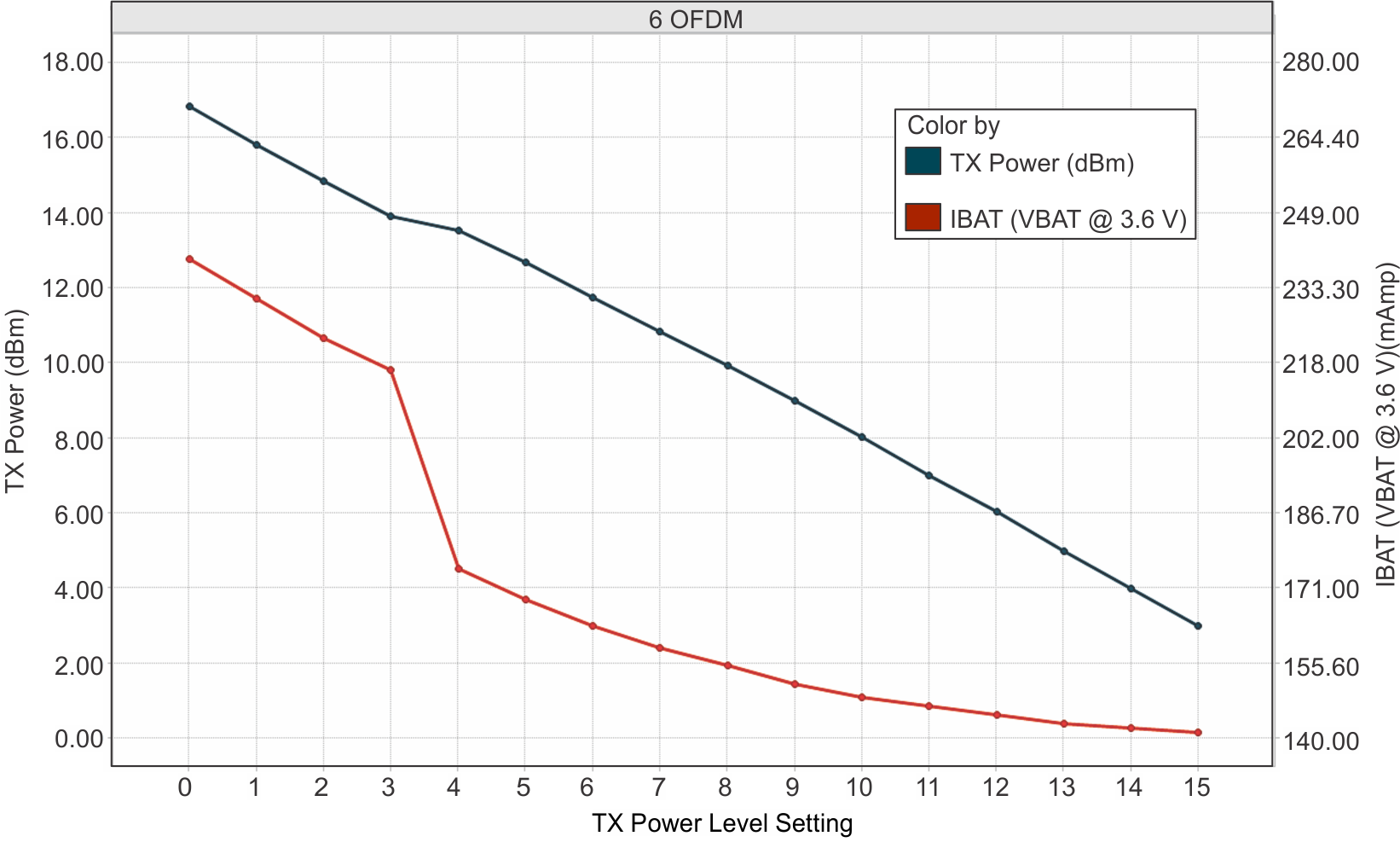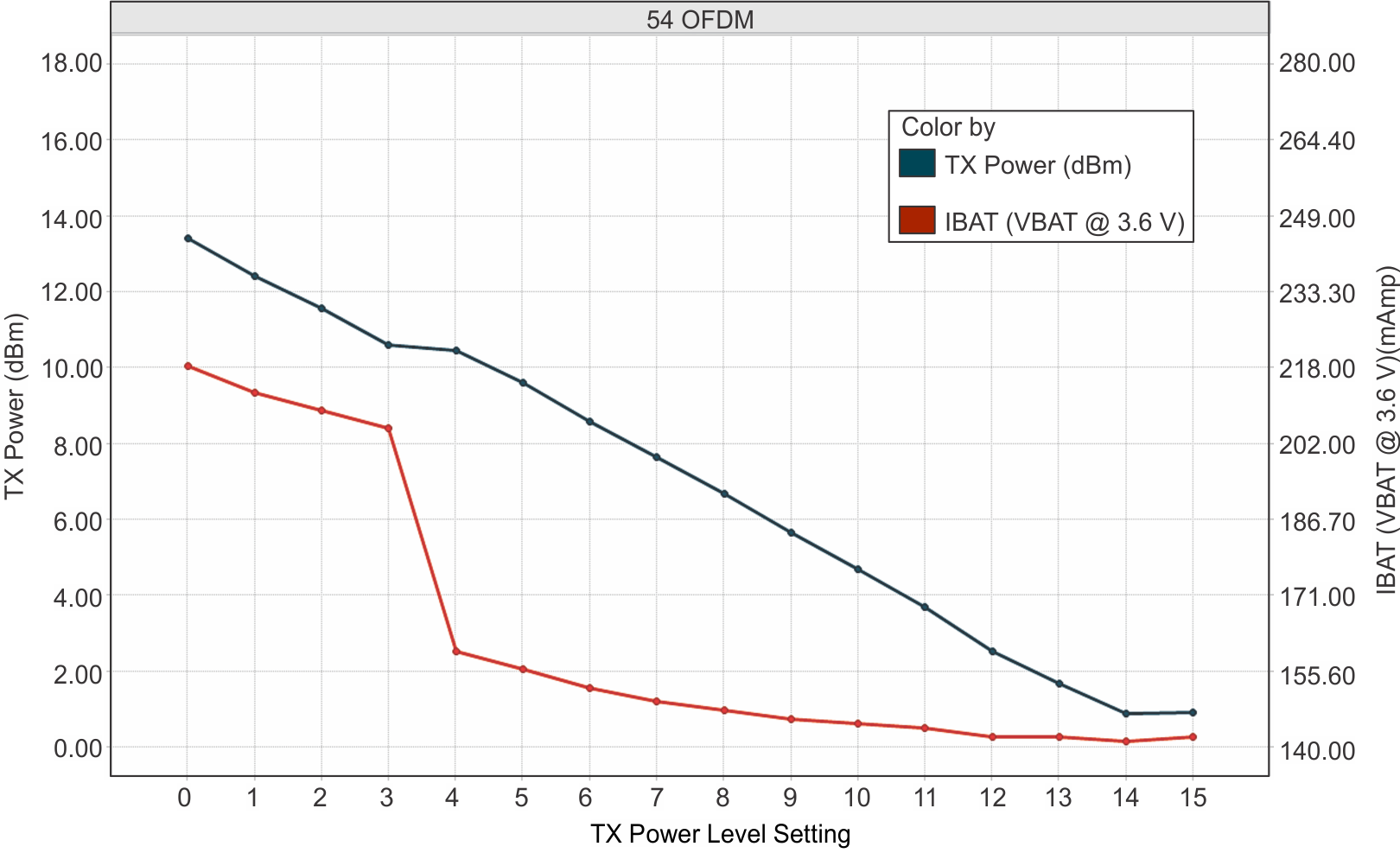JAJSHT5E February 2019 – December 2024 CC3135MOD
PRODUCTION DATA
- 1
- 1 特長
- 2 アプリケーション
- 3 概要
- 4 機能ブロック図
- 5 Device Comparison
- 6 Pin Configuration and Functions
-
7 Specifications
- 7.1 Absolute Maximum Ratings
- 7.2 ESD Ratings
- 7.3 Recommended Operating Conditions
- 7.4 Current Consumption Summary: 2.4GHz RF Band
- 7.5 Current Consumption Summary: 5GHz RF Band
- 7.6 TX Power Control for 2.4 GHz Band
- 7.7 TX Power Control for 5GHz Band
- 7.8 Brownout and Blackout Conditions
- 7.9 Electrical Characteristics for DIO Pins
- 7.10 WLAN Receiver Characteristics
- 7.11 WLAN Transmitter Characteristics
- 7.12 BLE and WLAN Coexistence Requirements
- 7.13 Reset Requirement
- 7.14 Thermal Resistance Characteristics for MOB Package
- 7.15 Timing and Switching Characteristics
- 7.16 External Interfaces
- 8 Detailed Description
- 9 Applications, Implementation, and Layout
- 10Environmental Requirements and SMT Specifications
- 11Device and Documentation Support
- 12Revision History
- 13Mechanical, Packaging, and Orderable Information
7.6 TX Power Control for 2.4 GHz Band
The CC3135MOD has several options for modifying the output power of the device when required. For the 2.4 GHz band it is possible to lower the overall output power at a global level using the global TX power level setting. In addition, the 2.4 GHz band allows the user to enter additional back-offs (1), per channel, region (2)and modulation rates (3)(4), via Image creator (see the UniFlash CC31xx, CC32xx SimpleLink™ Wi-Fi® and Internet-on-a chip™ Solution ImageCreator and Programming Tool User's Guide for more details).
Figure 7-1, Figure 7-2, and Figure 7-3 show TX Power and IBAT versus TX power level settings for modulations of 1 DSSS, 6 OFDM, and 54 OFDM, respectively.4
In Figure 7-1, the area enclosed in the circle represents a significant reduction in current during transition from TX power level 3 to level 4. In the case of lower range requirements (14-dBm output power), TI recommends using TX power level 4 to reduce the current.
 Figure 7-1 TX Power and IBAT vs TX Power Level Settings (1 DSSS)
Figure 7-1 TX Power and IBAT vs TX Power Level Settings (1 DSSS)
 Figure 7-2 TX Power and IBAT vs TX Power Level Settings (6 OFDM)
Figure 7-2 TX Power and IBAT vs TX Power Level Settings (6 OFDM)
 Figure 7-3 TX Power and IBAT vs TX Power Level Settings (54 OFDM)
Figure 7-3 TX Power and IBAT vs TX Power Level Settings (54 OFDM)